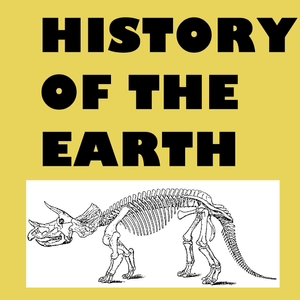
Vanadium is a metal, and by far its greatest use is in steel alloys, where tiny amounts of vanadium improve steel’s hardness, toughness, and wear resistance, especially at extreme temperatures. As I reported in my book What Things Are Made Of, more than 650 tons of vanadium was alloyed with iron to make the steel in the Alaska Pipeline, and there’s no good substitute for vanadium in strong titanium alloys used in jet planes and other aerospace applications.
Vanadium isn’t exactly one of the well-known elements, but in terms of abundance in the earth’s crust, most estimates indicate that there’s more vanadium than copper, lead, or tin. But it’s difficult to isolate, and it wasn’t produced chemically as a chloride until 1830, when Swedish chemist Nils Sefström named it for the Norse goddess of beauty, Vanadis, perhaps better known as Freyja. It wasn’t until 1867 that pure vanadium metal was isolated by British chemist Henry Roscoe, whose work on vanadium won him the name of the vanadium mica roscoelite.
As a mineral collector, I’m attracted to vanadinite, lead vanadate, because it forms beautiful hexagonal crystals, often bright red and so abundant from one lead-mining area of Morocco that excellent specimens can be had without mortgaging your house. Some vanadinite crystals are like perfect little hexagonal barrels, and others can form needle-like spikes around a central crystal, making the whole thing look like a cactus with caramel-orange spines.
Some of the vanadium for making steel alloys comes from primary mined vanadinite, but much more was once produced as a by-product of phosphorous manufacture, because it’s commonly associated with phosphate rock. And today, a lot of the world’s vanadium comes from refining crude oil and from fly ash residues, which are products of coal combustion. I got curious about why vanadium metal is so closely connected with these organic deposits.
Crude oil actually has lots of trace elements in it, including metals like gold, tin, and lead, but by far the most abundant are nickel and vanadium, as much as 200 parts per million nickel and 2000 parts per million vanadium in some crude oils, especially heavy, tarry oils like those found in Venezuela. In some oil, the nickel and vanadium can add up to 1% by weight of the oil, an incredibly huge amount. Refining Venezuelan crude gave the U.S. a lot of vanadium back in the late 20th century. But why is it in there?
Oil and coal are both the result of decaying and chemically changing plant matter. Forget dinosaurs; virtually all oil, natural gas, and coal comes from plants – usually marine algae for oil and gas and more woody, land-based vegetation for coal. There’s a class of organic molecules called porphyrins. I’m no organic chemist, but these complex hydrocarbon molecules, made of carbon, hydrogen, oxygen, and nitrogen have boxy ring-like structures with open space in the centers. Chlorophyll and hemoglobin are related chemicals, both of which contain metals in the middle of the structure, magnesium in chlorophyll and iron in hemoglobin. The vacant holes in the centers of porphyrins in crude oil are ideal for trapping metal molecules, and apparently vanadium, in the form of a VO2 ion, is one of the easiest to trap because of its molecular size and electronic valence. The vanadium comes from the original oil source rock, so there’s quite a range in vanadium content around the world. Heavy oils, like the tars in Venezuela, hold more than fluid oils like those in Saudi Arabia. This has more or less been known since at least the 1920s, and today the vanadium and other metal contents of oils are being used to characterize the original source rocks even when those source rocks no longer exist or are no longer what they once were.
The United States has had no mine production of vanadium since 2013 and even then we were 94% dependent on imports. Today 100% of our vanadium is imported, and we also produce some vanadium from imported crude oil and ash. More than 90% of the world’s vanadium is mined in China, Russia, and South Africa, although the US imports much of what it needs from the Czech Republic and Canada as well as Russia. We also imported enough ash and refining residues to account for 9000 tons of vanadium in 2015, mostly going as I said to making steel alloys. A new emerging use is in high-capacity storage batteries, where vanadium compounds make the electrolyte. These batteries have potential uses for renewable energies such as wind and solar power, and although in 2015 and 2016 several companies were working on prototype designs, they’re still pretty expensive batteries.
02/27/18 • -1 min
Generate a badge
Get a badge for your website that links back to this episode
Select type & size
<a href="https://goodpods.com/podcasts/history-of-the-earth-6092/episode-389-vanadium-224899"> <img src="https://storage.googleapis.com/goodpods-images-bucket/badges/generic-badge-1.svg" alt="listen to episode 389 vanadium on goodpods" style="width: 225px" /> </a>
Copy